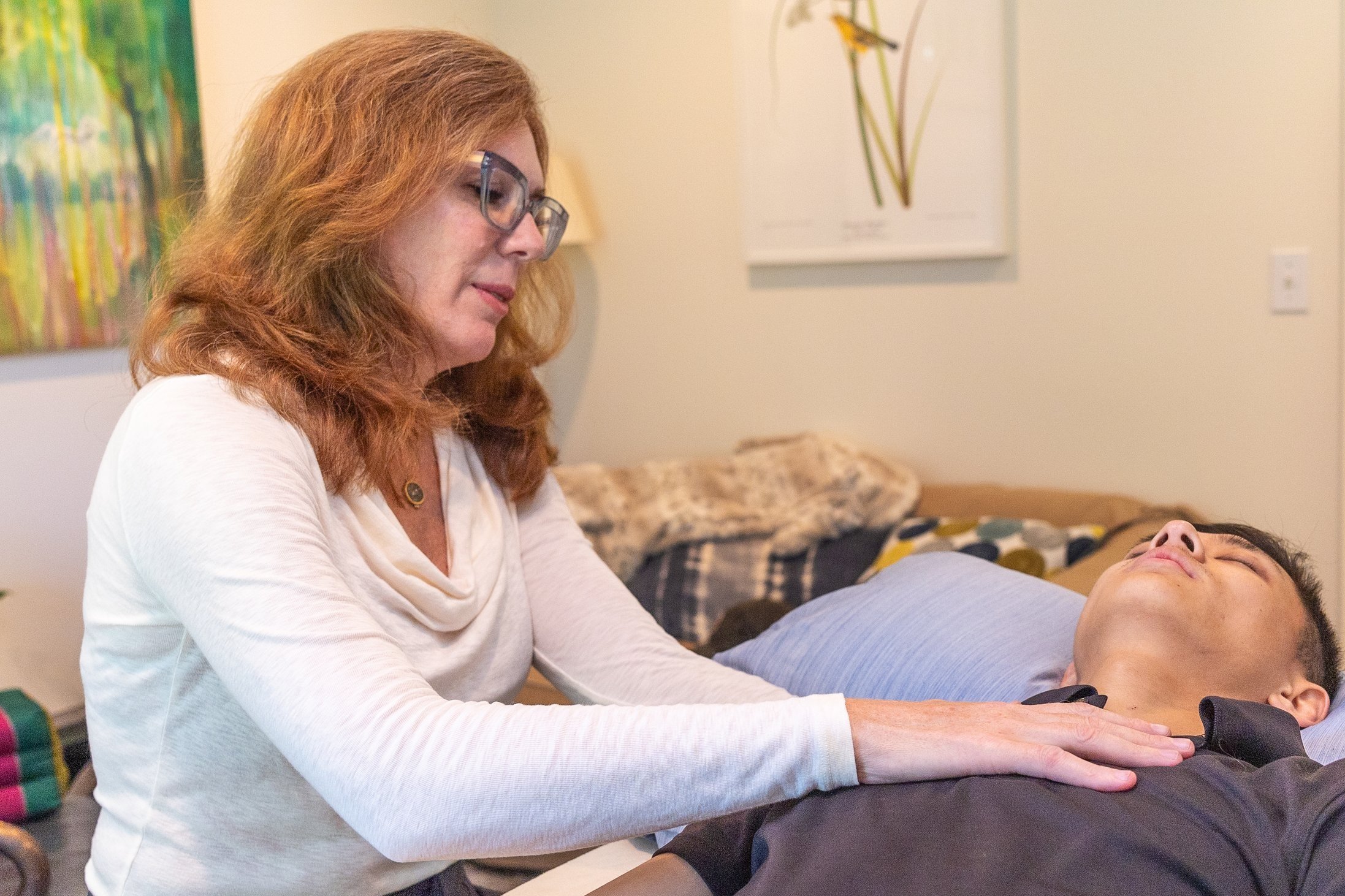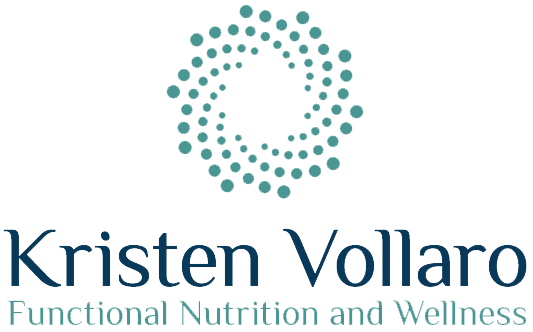
CRANIOSACRAL THERAPY
What is Craniosacral?
CranioSacral (CST) is a gentle, hands-on method of evaluating and enhancing the function of the body’s craniosacral system. It is named for the cranium (head) and sacrum (tailbone), the two “endpoints” of the system that protect the brain and spinal cord. The practitioner usually will place hands to open the transverse diaphragms of the body (pelvic, respiratory, thoracic, hyoid (throat), and occipital-cranial base in order to allow restriction to open and for improved fluid flow. From there, gentle hand holds can help open sutural restrictions between the cranial bones, restrictions in the fascia, muscles, tendons, or any other soft tissue area in the body, Inter-oral work may also be performed, especially in cases such as TMJ or migraines. The client is in charge of the session, so if they are not comfortable with hands on certain areas of the body, such as on the throat or in the mouth, I will always respect that.
During the session, the client stays clothed (although I like clients to wear loose, comfy clothes). Clients are usually positioned on their back but may remain seated in any position they choose if that is not comfortable. The client may talk about what they notice in the body, I may narrate what structures or anatomy I am working on as the practitioner, or it may be a silent session. It’s always up to the client and there is no right or wrong. Everyone is unique.
Central Nervous System
Few the body structures have more influence over your health and well-being than your central nervous system. The craniosacral system, which is cerebrospinal fluid and membranes that protect your brain and spinal cord has a tremendous impact on the central nervous system.
The body is a self-correcting system. It likes to be in homeostasis. Craniosacral therapy facilitates or enhances the body’s own ability to heal from trauma, disease, or injury that may have overwhelmed the system. Is this a magic, instant cure? No. But when the central nervous system is freed up, it can naturally reduce pain and stress and enhance your health, immune system function, and well-being.
Wait, what the heck is fascia?
Fascia is connective tissue that surrounds every muscle, organ, blood vessel, bone, and nerve fiber in the body, making one continuous system from head to toe. We have both transverse facia in the body (making up the diaphragms), and each organ is encased in its own protective fascial “envelope.” If forms the 3D mechano-metabolic structure in the body. Fascia can also affect the immune system. Fascia can have tension patterns in it from the act of life and living - falls, injuries, surgeries, stress, and repetitive functional movements. It is one continuous web in the body which is both mobile and changeable.
Somato-Emotional Release
SomatoEmotional Release® (SER) is a therapeutic process used in CranioSacral Therapy that helps to release emotional energy of past traumas that for reasons deemed appropriate have been retained, suppressed, and isolated within the body. Sometimes the body has a “memory” of an injury that can be released during craniosacral work. This is often something that comes up organically. Often can be helpful for people with anxiety, PTSD, and other types of trauma whether it be an accident or any other event that the body has integrated. Emotional release does not have to be dramatic, sometimes it is the person on the table coming to an understanding of what they (the individual/thinking mind or the physical body) have been through.
I don’t want to talk about my feelings
No problem, you do not have to. You are in charge of your session and it is my role to listen to you as well as your body. Sometimes work is strictly structural and there are no emotions underlying that. If you find that you are having emotions and you are not comfortable discussing them, you don’t have to. Give yourself permission to just be as you are in my office.
I like to note that although I have done a lot of specialized training in trauma-informed care, I am not a mental health therapist. I am always happy to provide a referral for a talk or EMDR therapist and I often work with other therapists to perform CST in conjunction with their work. CranioSacral therapy often works with the client’s body, mind, and higher self or subconscious, so this work can be highly integrative for people going through a life transition or working on themself.
Why do you do this work?
I love CranioSacral Therapy. I took CST 1 with the Upledger Institute in 2017 and I’ve never looked back. I love learning, growing as a therapist, and being involved in the craniosacral community. I have worked with Susan Steiner in Providence, RI (who was one of the first CST Upledger Instructors and has more than 40 years of experience) in order to continue to improve my techniques. I serve as a teaching assistant for Upledger for classes in New England and I continue to take classes for advanced therapists every year. As a healthcare practitioner, I am driven to help people. It is my purpose and mission in life. I have personally benefitted from craniosacral therapy and I see people getting relief with this work. My bottom line is - if it didn’t work, I would not provide it. As a physical therapist assistant, I have worked in health care in both inpatient and outpatient rehab facilities, which I loved, but craniosacral is a modality that I have found works really well. Does it replace every other modality and fix everything? No, but I made the decision that I wanted to work to become the best CST therapist I can be and so here I am.
Where does CST come from?
Craniosacral therapy was pioneered and developed by osteopathic physician John E. Upledger. Dr. Upledger served from 1975-1983 as a clinical researcher and professor of Biomechanics at the College of Osteopathic Medicine at Michigan State University. It was during those years that his team of anatomists, physiologists, biophysicists and bioengineers was tasked with performing experiments to test the existence and influence of the craniosacral system. Today, the Upledger Institute in Palm Beach Gardens, Florida offers training to craniosacral therapists all over the world.
CST is used to help facilitate the body's natural and innate healing processes and is often indicated for:
Headache
Anxiety
Chronic neck and back pain
Autism
Central Nervous System disorders
Concussions and Traumatic Brain Injuries
Chronic Fatigue
Musculoskeletal dysfunction
Stress and tension
Fibromyalgia and other connective tissue disorders
TMJ
Post-traumatic stress disorder
Post-surgical dysfunction
Fee
Initial Intake – $225 (90 minutes)
Includes a comprehensive consultation and Craniosacral Therapy session.
Follow-Up Sessions:
$165 (60 minutes)
$195 (90 minutes)
For customized packages, please reach out to us directly—we’re happy to create a plan that suits your needs!
Continuing Education
CST 1
CST 2
SER 1
SER 2
The Body alchemy of Relational Neuroscience, advance therapeutic skills for working with Trauma, Abuse and Neglect
Craniosacral Therapy Applications for Concussion
CST for Longevity: Reversal of the aging process
Touching the brain 1: Stimulating Self-correction through the glial interface
CST mastery
Advanced CST applications with Dr. Lisa Upledger
Teaching assistant for the Upledger Institute
Mentored by Susan Steiner, longstanding Upledger Instructor and part of CST mastery group




